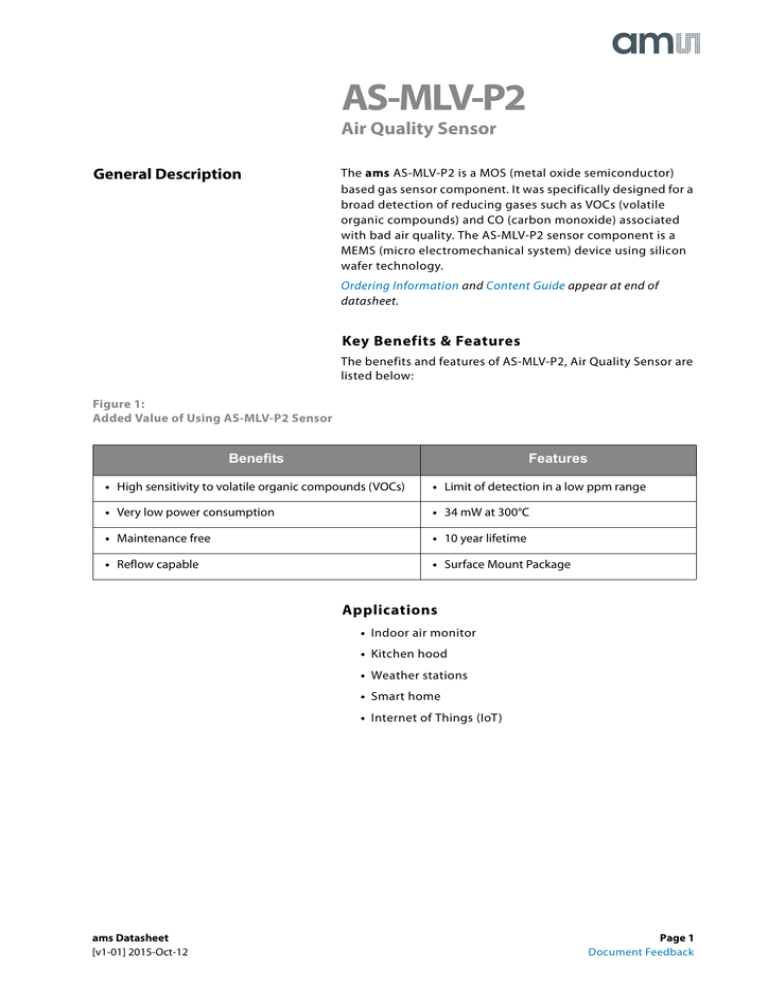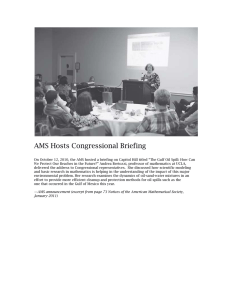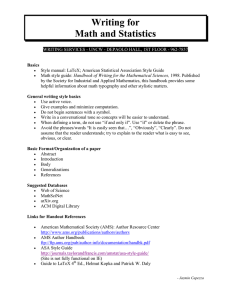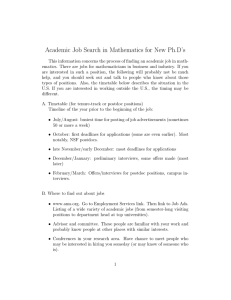
AS-MLV-P2
Air Quality Sensor
General Description
The ams AS-MLV-P2 is a MOS (metal oxide semiconductor)
based gas sensor component. It was specifically designed for a
broad detection of reducing gases such as VOCs (volatile
organic compounds) and CO (carbon monoxide) associated
with bad air quality. The AS-MLV-P2 sensor component is a
MEMS (micro electromechanical system) device using silicon
wafer technology.
Ordering Information and Content Guide appear at end of
datasheet.
Key Benefits & Features
The benefits and features of AS-MLV-P2, Air Quality Sensor are
listed below:
Figure 1:
Added Value of Using AS-MLV-P2 Sensor
Benefits
Features
• High sensitivity to volatile organic compounds (VOCs)
• Limit of detection in a low ppm range
• Very low power consumption
• 34 mW at 300°C
• Maintenance free
• 10 year lifetime
• Reflow capable
• Surface Mount Package
Applications
• Indoor air monitor
• Kitchen hood
• Weather stations
• Smart home
• Internet of Things (IoT)
ams Datasheet
[v1-01] 2015-Oct-12
Page 1
Document Feedback
AS-MLV-P2 − Pin Assignment
Pin Assignment
Figure 2:
Pin Diagram
Pin 1 Indicator
2
3
1
4
Figure 3:
Pin Description
Pin Number
Pin Name
1
RS1
Sensor electrode 1
2
RH1
Heater 1
3
RS2
Sensor electrode 2
4
RH2
Heater 2
Page 2
Document Feedback
Description
ams Datasheet
[v1-01] 2015-Oct-12
AS-MLV-P2 − Environmental Specifications
The sensor element characteristics are valid under the following
environmental conditions:
Environmental Specifications
Figure 4:
Environmental Operating Conditions
Description
Value
Ambient Operating Range
Temperature range
0°C to 50°C
Humidity range (relative humidity,
non-condensing)
5% to 95%
Ambient Storage Range
Storage temperature range
-40°C to 85°C
Storage humidity range (relative humidity,
non-condensing)
5% to 95%
Air Flow
Experienced air velocity
0m/s to 4m/s
Note(s):
1. The sensor must be kept separate from all sourced of silicone contamination to fulfill the functional and lifetime requirements.
ams Datasheet
[v1-01] 2015-Oct-12
Page 3
Document Feedback
AS-MLV-P2 − Electrical Characteristics
Electrical Characteristics
The sensor elements operate at an elevated temperature. The
elevated temperature is realized by means of the Pt heater
which is implemented within the silicon nitride membrane. The
recommended operating temperature for the AS-MLV-P2 is
300°C, which is equivalent to an applied power of approx.
34mW at room temperature.
Figure 5:
Electrical Characteristics
Description
Value
Resistance Values
Sensor resistance range
3kΩ to 3MΩ
Typical baseline in ambient air
50kΩ to 500kΩ
Heater resistance (2)
150Ω ± 30Ω at 300°C
Absolute Maximum Supply Ratings
Power supply
50mW (very short time range)
Heater current
25mA
Heater Voltage
3.0 V
Lifetime Requirements
Expected lifetime (1)
10 years
With a minimum of
85.000 hours
On/off cycles
20.000 times
Sensor Element Response
Response from
10%
To its final value
90%
For 0 - 20 ppm CO within
< 10sec
Sensor Element Recovery
Response from
10%
To its final value
90%
Back from 20 – 0 ppm CO
< 1min
Note(s):
1. This lifetime can only be reached with respect to the recommended operation of the sensor. Especially the maximum ratings during
operation have to be followed carefully. With this background, the AS-MLV-P2 is maintenance free and shall require no replacement
during specified lifetime.
2. Pt heater element operates at 300°C
Page 4
Document Feedback
ams Datasheet
[v1-01] 2015-Oct-12
AS-MLV-P2 − Detailed Description
AS-MLV-P2 heater and inter-digital electrode structures use
Platinum and are implemented in an approximately one
micrometer-thin silicon nitride membrane to achieve ultimate
stability and lowest possible power consumption. A highly
sensitive and long-term stable polycrystalline tin
dioxide-based sensitive material is deposited on the
inter-digital electrodes. At an elevated operation temperature
of approx. 300°C, this catalytically active material shows a gas
concentration dependent resistance change.
Detailed Description
Sensing Properties
The AS-MLV-P2 sensor component shows a strong sensitivity to
a wide range of reducing gases as can be seen in Figure 6. Please
note that those results may vary due to different environmental
conditions.
Figure 6:
Sensor Sensitivity
10
CO
butane
methane
ethanol
hydrogen
RS/R0
1
0,1
0,01
10
100
1000
10000
Gas Concentration (ppm)
Sensor Sensitivity: Sensitivities for various gas concentrations, this graph shall just give an indication and can
vary slightly from sensor to sensor.
ams Datasheet
[v1-01] 2015-Oct-12
Page 5
Document Feedback
AS-MLV-P2 − Detailed Description
Cross Sensitivities
Due to the basic operation principle of MOS gas sensors, the
AS-MLV-P2 sensor component does have a cross sensitivity to
humidity changes. This effect provides additional information
and widens the application range for the sensor. This feature
especially supports applications in environments where the
detection of significant humidity changes is supporting the
functionality, such as bathroom and kitchen environments.
Figure 7 shows the dependency of humidity using the example
of CO signals to get a visualized feeling for the effect. Please
note that this dataset is just meant to be an example and the
values may vary from sensor to sensor.
Figure 7:
Cross Sensitivity of Humidity for CO
10
RS/R0
30ppm CO
1
0,1
30
40
50
60
70
80
% r.h.
Cross Sensitivity of Humidity for CO: Cross sensitivity of humidity for the example of CO. This data is just meant
to be a visualization of the influence of humidity and will vary slightly from sensor to sensor.
Page 6
Document Feedback
ams Datasheet
[v1-01] 2015-Oct-12
AS-MLV-P2 − Application Information
Due to the characteristics of the sensor, there are some issues
to be taken care of while implementing. The operation
temperature of the sensor has to be kept constant; therefore
the circuit on heater site shall have the possibility to be
regulated. The critical issue of the sensor resistance is the wide
range of values which has to be covered during operation.
Application Information
All following circuits are meant to be examples which have to
be adapted carefully to the different applications.
Sensor Resistance
The sensitive layer can change its resistance over several orders
of magnitude, depending on the production and gas
exposition. The electrical power dissipated in the sensitive layer
must be limited and must not exceed 2mA. This power shall also
avoid performing high changes over short time. Because of this
issue a measuring range shifting realized with series resistors
will have an effect to the sensor signal and should be avoided.
As a suggestion we measure the sensor resistance with a simple
voltage divider as shown in Figure 8. V H determines the heater
voltage and therefore the operation temperature of the sensor.
This regulation is described in a later chapter. Here we focus on
the sensor resistance measuring. To meet the described
specification a value of 10kOhm or 100kOhm for the load
resistor (R L) and a Voltage of 5V for VS is a good starting point
for a broad range of the sensor applications. A high precision
noise free voltage source is recommended for generating VS. R S
and R L form a voltage divider, which can be used to calculate
R S (see EQ 1).
(EQ1)
VS
R S = R L ------------ – 1
V out
Figure 8:
A Basic Measurement Circuit for the Sensor Resistance
RS
1
2
Vs
ams Datasheet
[v1-01] 2015-Oct-12
VH
3
4
RL
Vout
Page 7
Document Feedback
AS-MLV-P2 − Application Information
The resolution of the measurement of R S is recommended to
be better or equal to 1% of the actual reading. This allows
making use of the full performance of the sensor. The
requirements for the A/D conversion of the output voltage Vout
is described in the following section.
The input impedance of the A/D converter should be high
enough not to influence the level of the voltage divider, a ration
of at least 10 between input impedance and values of R S and/or
R L is recommended.
Averaging A/D conversion procedures are recommended in
order to suppress fast resistance changes from the sensitive
layer (resistive noise and change of the resistance due to
chemical influences).
In order to achieve 1% of precision of the read-out of R S, the
A/D conversion of Vout needs lower resolution, if sensor- and
load resistor match. A larger difference between R S and RL
requires a higher resolution of the A/D conversion. The
following figure gives a few examples for V S = 5V.
Figure 9:
Examples for Readout of R S with 1% Resolution (VS=5V)
RS [Ohm]
RL [Ohm]
Vout [V]
A/D Voltage Step for 1% Resolution
100
10k
4.95
0.5mV
1k
10k
4.5454
4.1mV
10k
10k
2.5
12.4mV
100k
10k
0.4545
4.1mV
1M
10k
0.0495
0.5mV
1k
100k
4.95
0.5mV
10k
100k
4.5454
4.1mV
100k
100k
2.5
12.4mV
1M
100k
0.4545
4.1mV
Examples for Readout of R S with 1% Resolution: The series resistor RL has also the functionality to limit the
power dissipated to the sensitive layer.
If the A/D conversion is single ended (common ground) it might
be useful to change the sequence of load resistor and sensor
resistor in the voltage divider. This enables to increase the
resolution by using a lower reference voltage for the A/D
conversion.
Page 8
Document Feedback
ams Datasheet
[v1-01] 2015-Oct-12
AS-MLV-P2 − Application Information
A constant current source can also be used to read-out the
sensitive layer. In this case the electrical power dissipated in the
sensitive layer must be limited and must not exceed 1mW for
all values of R S.
Heater Control
To solve the application the sensor needs a certain temperature,
the operation point. This temperature correlates with the
heater resistance of the sensor module. The heater resistance
and its TCR varies with production and the sensor temperature
should be adjusted by applying a calibration step up front. In
this calibration step the characteristic of the correlation of
temperature and heater power is used. For iAQ applications the
dependency for the operation temperature of ~300°C is 34mW
@ 23°C ± 2°C. The measured heater resistance value with this
applied conditions is the set-point which will be important for
the further operation.
Variation of ambient temperature may have an influence in the
sensor temperature and its heater resistance. The chosen circuit
shall be adjustable and should keep the heater resistance
constant at the desired set-point. This can be solved by a basic
PWM circuit shown in Figure 10.
Figure 10:
Basic PWM Circuit for Heater Control
Basic PWM Circuit for Heater Control: A typically heater driver circuit, R1 is the current limit resistor, R2 is
needed as a bypass resistor
ams Datasheet
[v1-01] 2015-Oct-12
Page 9
Document Feedback
AS-MLV-P2 − Application Information
To use the example a p-channel MOSFET is mandatory; using
an n-channel will need a change of the overall circuit design. In
this case the Voltage VCC is 5V with a max ripple of 20mV, but
the circuit is also valid for 3.3V. The circuit should be designed
to achieve a PWM of 30-60% depending on heater set-point.
This range gives the security that all specified environmental
temperature ranges can be compensated.
The heater resistance should be measured at the beginning of
the low phase indicated as T RH in the drawing Figure 11. The
Voltage drop UH is measured and Rh can be calculated as shown
in EQ 2.
(EQ2)
UH ⋅ R2
R H = --------------------------VCC – U H
Please note that this circuit are just mend to be an example and
each circuit which can fulfill the conditions and respects the
absolute maximum ratings of the sensor can be used.
Figure 11:
Example of PWM Cycle with Measurement Point
The heater can also be controlled by a DAC controlled circuit
with a voltage divider.
Page 10
Document Feedback
ams Datasheet
[v1-01] 2015-Oct-12
AS-MLV-P2 − Application Information
Heater Calibration
As mentioned in the previous chapter the each sensor has its
own set-point at the operation temperature. This set-point can
be determined by a previous calibration step. This means that
the AS-MLV-P2 is started at room temperature (23°C ± 3°C) and
powered with 34mW. With these conditions the heater
resistance is measured and stored into the EEPROM. This heater
resistance is the certain set-point which is kept constant with
the regulating PWM during operation.
General Characteristics
The sensor has some native characteristics which should be
considered in the application development.
Burn-In Behavior
Once in lifetime the sensor performs a special burn in behavior,
this curve is characterized in three phases which are described
with the following figure.
Figure 12:
Burn-In of Sensor
Description
Duration
Phase 1
Fast increase of the sensor resistance
~ 10 hours
Phase 2
Plateau with nearly stable baseline
~ 12 hours
Phase 3
Long drift like decrease of the sensor resistance
ams Datasheet
[v1-01] 2015-Oct-12
> 4 days
Page 11
Document Feedback
AS-MLV-P2 − Application Information
A characteristic example is shown in Figure 13. This behavior is
caused due to manufacturing issues and is mandatory. After
once following this issue it will never appear again. During the
burn in phase the resistance range can be exceeded
considerably.
Figure 13:
Characteristic Resistance Curve during Burn-In
Page 12
Document Feedback
ams Datasheet
[v1-01] 2015-Oct-12
AS-MLV-P2 − Application Information
Run-In
Each time after powering the sensor, the baseline of the
sensitive layer performs a small run in phase. The curve is
characterized with a steady increasing resistance. The length of
this phase is depending on the sensors history. The longer the
sensor was unpowered the longer the run in phase will take.
The standard duration is approx. 3-5 minutes.
Figure 14:
Run-In Phase of Sensor
600000
550000
Resistance [Ω]
500000
450000
400000
350000
300000
250000
200000
150000
100000
0
300
600
900
1200
1500
1800
2100
2400
2700
3000
Time [sec]
ams Datasheet
[v1-01] 2015-Oct-12
Page 13
Document Feedback
AS-MLV-P2 − Mechanical Information
Mechanical Information
Figure 15:
Module Dimensions
9.1 ±0.30
8.1 ±0.30
3
1
4
8.1 ±0.30
9.1 ±0.30
2
4.53 ±0.20
2.650
Ø7
RoHS
Green
1.55 ±0.10
Note(s):
1. All Dimensions are in millimeters.
Page 14
Document Feedback
ams Datasheet
[v1-01] 2015-Oct-12
AS-MLV-P2 − Mechanical Information
Figure 16:
Module Markings
AS-MLV-P2
SNYYxxxxxxx
Figure 17:
Module and Marking Elements
Item
Description
PCB Material
FR4 with gold surface (7μm Ni / 3μm Au)
Connector
Edge connector
Marking PIN1
White mark
Label
Laser mark AS-MLV-P2
Product name (first row)
AS-MLV-P2
SNYYxxxxxxx
Serial number (second row)
YY → two digits production year
xxxxxxx → 7 digits running number
ams Datasheet
[v1-01] 2015-Oct-12
Page 15
Document Feedback
AS-MLV-P2 − Mechanical Information
Figure 18:
Tape and Reel Information
Description
Items
Symbol
Value
Length
Ao
9.70
Width
Bo
9.70
Depth
Ko
5.00
Pitch
P1
12.00
Angle
θ1
3
Angle
θ2
3
Unit
Tolerance
mm
±0.10
Degree
Max.
Pocket
Page 16
Document Feedback
ams Datasheet
[v1-01] 2015-Oct-12
AS-MLV-P2 − Mechanical Information
Description
Perforation
Distance between
center line
Items
Symbol
Value
Diameter
ΘD0
1.50
+0.10
Diameter
ΘD1
1.50
-0.00
Pitch
P0
4.00
Pitch
P2
2.00
Position
E
1.75
Width
F
7.50
Type
Carrier tape
material
Width
Tolerance
mm
±0.10
Echips
W
16.00
±0.30
mm
Thickness
Requirement/
Notice
Unit
T
0.50
±0.05
1. Camber 250mm. Should be less than 1.00mm by Camber gauge.
2. Must conform to E.I.A. Standard.
Note(s):
1. All dimensions are in millimeters unless otherwise stated.
2. Unspecified dimension tolerance should be ±0.10mm.
3. Cumulative tolerance of 10 sprocket holes is ±0.20mm.
ams Datasheet
[v1-01] 2015-Oct-12
Page 17
Document Feedback
AS-MLV-P2 − Soldering Information
Soldering Information
Handling
The AS-MLV-P2 should be handled carefully, shear stress should
be avoided. The sensor is protected against particles and liquids
by a membrane. This membrane shall not be removed or
touched.
Soldering Instructions
The AS-MLV-P2 can be soldered in standard reflow soldering
ovens. The reflow oven shall be purged with clean air. Other
gases must be avoided. For the lead free reflow process a
standard process IPC/JEDEC J-STD-020 with peak temperature
up to maximum 230°C on surface is suggested. See Figure 19
for more detailed description.
Note(s): The device shall be kept clear of liquids; therefore a
PCB washing process must be avoided in any case.
For manual soldering: contact must be limited to 5 seconds at
a maximum temperature of 350°C.
Figure 19:
Solder Reflow Graph
Page 18
Document Feedback
ams Datasheet
[v1-01] 2015-Oct-12
AS-MLV-P2 − Ordering & Contact Information
Ordering & Contact Information
Figure 20:
Ordering Information
Ordering Code
Marking
Delivery Form
Delivery Quantity
AS-MLV-P2
AS-MLV-P2
Tape & Reel
900
Buy our products or get free samples online at:
www.ams.com/ICdirect
Technical Support is available at:
www.ams.com/Technical-Support
Provide feedback about this document at:
www.ams.com/Document-Feedback
For further information and requests, e-mail us at:
ams_sales@ams.com
For sales offices, distributors and representatives, please visit:
www.ams.com/contact
Headquarters
ams AG
Tobelbaderstrasse 30
8141 Unterpremstaetten
Austria, Europe
Tel: +43 (0) 3136 500 0
Website: www.ams.com
ams Datasheet
[v1-01] 2015-Oct-12
Page 19
Document Feedback
AS-MLV-P2 − RoHS Compliant & ams Green Statement
RoHS Compliant & ams Green
Statement
RoHS: The term RoHS compliant means that ams AG products
fully comply with current RoHS directives. Our semiconductor
products do not contain any chemicals for all 6 substance
categories, including the requirement that lead not exceed
0.1% by weight in homogeneous materials. Where designed to
be soldered at high temperatures, RoHS compliant products are
suitable for use in specified lead-free processes.
ams Green (RoHS compliant and no Sb/Br): ams Green
defines that in addition to RoHS compliance, our products are
free of Bromine (Br) and Antimony (Sb) based flame retardants
(Br or Sb do not exceed 0.1% by weight in homogeneous
material).
Important Information: The information provided in this
statement represents ams AG knowledge and belief as of the
date that it is provided. ams AG bases its knowledge and belief
on information provided by third parties, and makes no
representation or warranty as to the accuracy of such
information. Efforts are underway to better integrate
information from third parties. ams AG has taken and continues
to take reasonable steps to provide representative and accurate
information but may not have conducted destructive testing or
chemical analysis on incoming materials and chemicals. ams AG
and ams AG suppliers consider certain information to be
proprietary, and thus CAS numbers and other limited
information may not be available for release.
Page 20
Document Feedback
ams Datasheet
[v1-01] 2015-Oct-12
AS-MLV-P2 − Copyrights & Disclaimer
Copyrights & Disclaimer
Copyright ams AG, Tobelbader Strasse 30, 8141
Unterpremstaetten, Austria-Europe. Trademarks Registered. All
rights reserved. The material herein may not be reproduced,
adapted, merged, translated, stored, or used without the prior
written consent of the copyright owner.
Devices sold by ams AG are covered by the warranty and patent
indemnification provisions appearing in its General Terms of
Trade. ams AG makes no warranty, express, statutory, implied,
or by description regarding the information set forth herein.
ams AG reserves the right to change specifications and prices
at any time and without notice. Therefore, prior to designing
this product into a system, it is necessary to check with ams AG
for current information. This product is intended for use in
commercial applications. Applications requiring extended
temperature range, unusual environmental requirements, or
high reliability applications, such as military, medical
life-support or life-sustaining equipment are specifically not
recommended without additional processing by ams AG for
each application. This product is provided by ams AG “AS IS”
and any express or implied warranties, including, but not
limited to the implied warranties of merchantability and fitness
for a particular purpose are disclaimed.
ams AG shall not be liable to recipient or any third party for any
damages, including but not limited to personal injury, property
damage, loss of profits, loss of use, interruption of business or
indirect, special, incidental or consequential damages, of any
kind, in connection with or arising out of the furnishing,
performance or use of the technical data herein. No obligation
or liability to recipient or any third party shall arise or flow out
of ams AG rendering of technical or other services.
ams Datasheet
[v1-01] 2015-Oct-12
Page 21
Document Feedback
AS-MLV-P2 − Document Status
Document Status
Document Status
Product Preview
Preliminary Datasheet
Datasheet
Datasheet (discontinued)
Page 22
Document Feedback
Product Status
Definition
Pre-Development
Information in this datasheet is based on product ideas in
the planning phase of development. All specifications are
design goals without any warranty and are subject to
change without notice
Pre-Production
Information in this datasheet is based on products in the
design, validation or qualification phase of development.
The performance and parameters shown in this document
are preliminary without any warranty and are subject to
change without notice
Production
Information in this datasheet is based on products in
ramp-up to full production or full production which
conform to specifications in accordance with the terms of
ams AG standard warranty as given in the General Terms of
Trade
Discontinued
Information in this datasheet is based on products which
conform to specifications in accordance with the terms of
ams AG standard warranty as given in the General Terms of
Trade, but these products have been superseded and
should not be used for new designs
ams Datasheet
[v1-01] 2015-Oct-12
AS-MLV-P2 − Revision Information
Revision Information
Changes from 1-00 (2015-Jul-10) to current revision 1-01 (2015-Oct-12)
Page
Updated Figure 3
2
Updated EQ1
7
Updated Figure 8
7
Note(s):
1. Page and figure numbers for the previous version may differ from page and figure numbers in the current revision.
2. Correction of typographical errors is not explicitly mentioned.
ams Datasheet
[v1-01] 2015-Oct-12
Page 23
Document Feedback
AS-MLV-P2 − Content Guide
Content Guide
Page 24
Document Feedback
1
1
1
General Description
Key Benefits & Features
Applications
2
3
4
Pin Assignment
Environmental Specifications
Electrical Characteristics
5
5
6
Detailed Description
Sensing Properties
Cross Sensitivities
7
7
9
11
11
11
13
Application Information
Sensor Resistance
Heater Control
Heater Calibration
General Characteristics
Burn-In Behavior
Run-In
14
Mechanical Information
18
18
18
Soldering Information
Handling
Soldering Instructions
19
20
21
22
23
Ordering & Contact Information
RoHS Compliant & ams Green Statement
Copyrights & Disclaimer
Document Status
Revision Information
ams Datasheet
[v1-01] 2015-Oct-12







